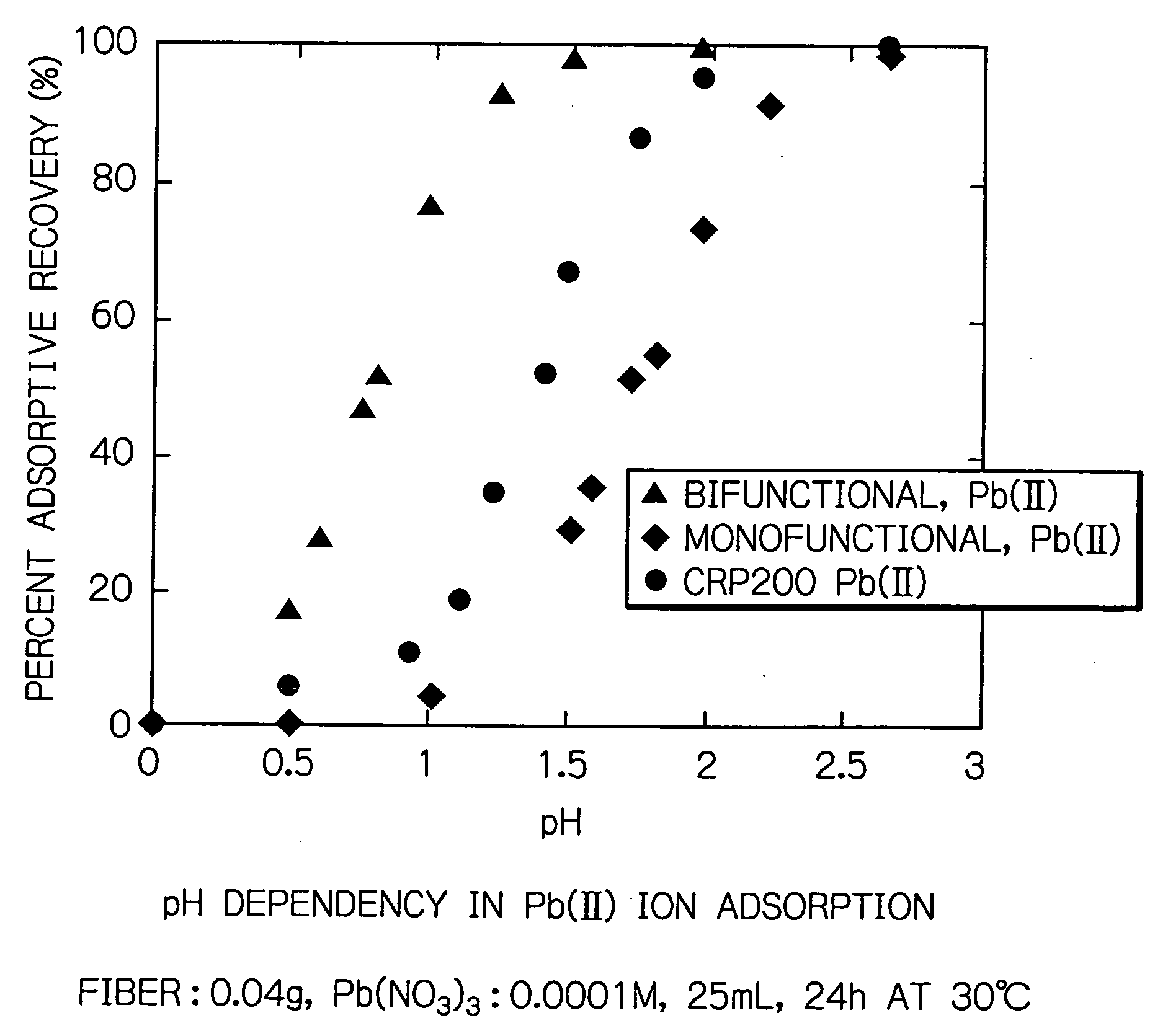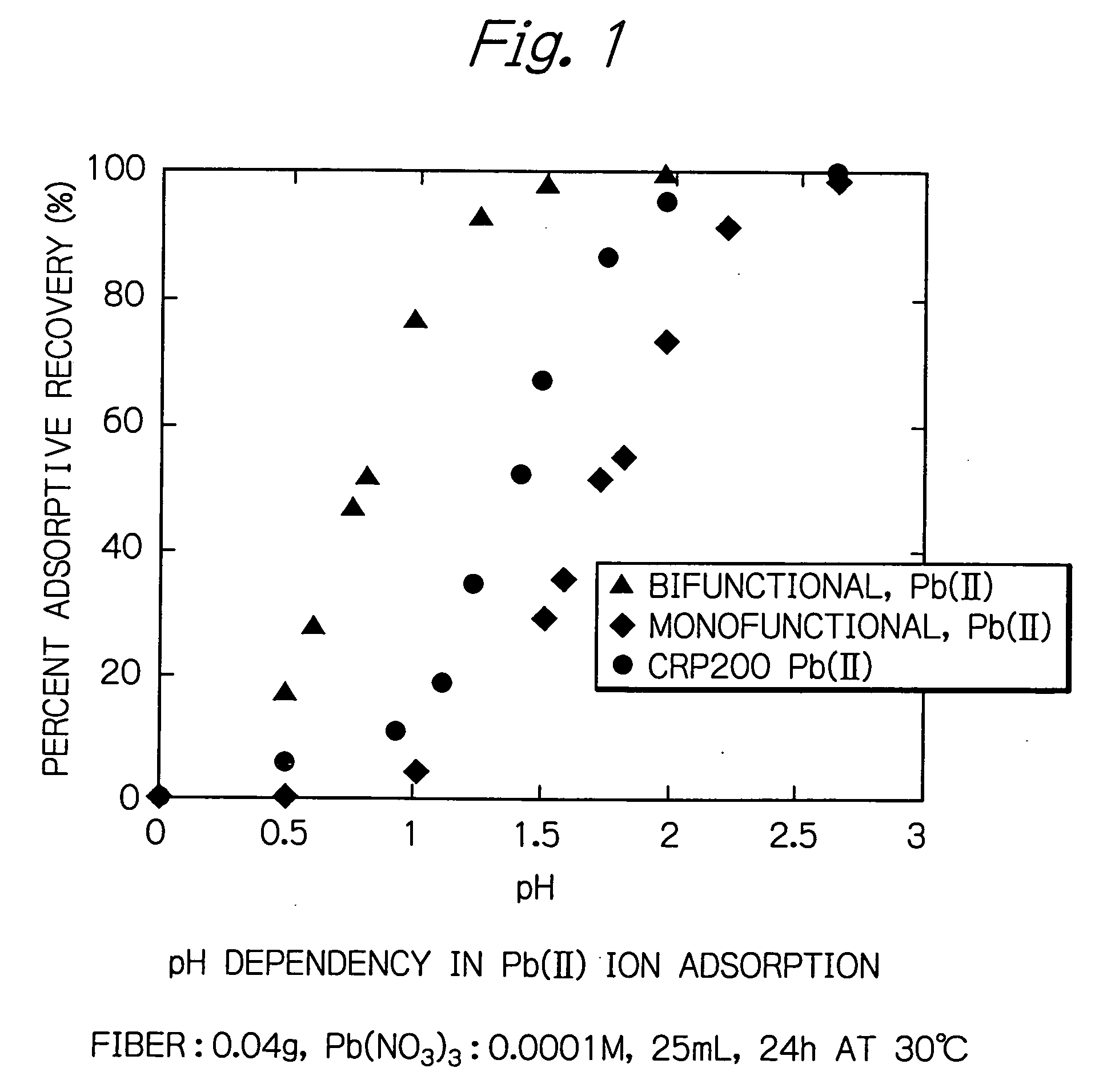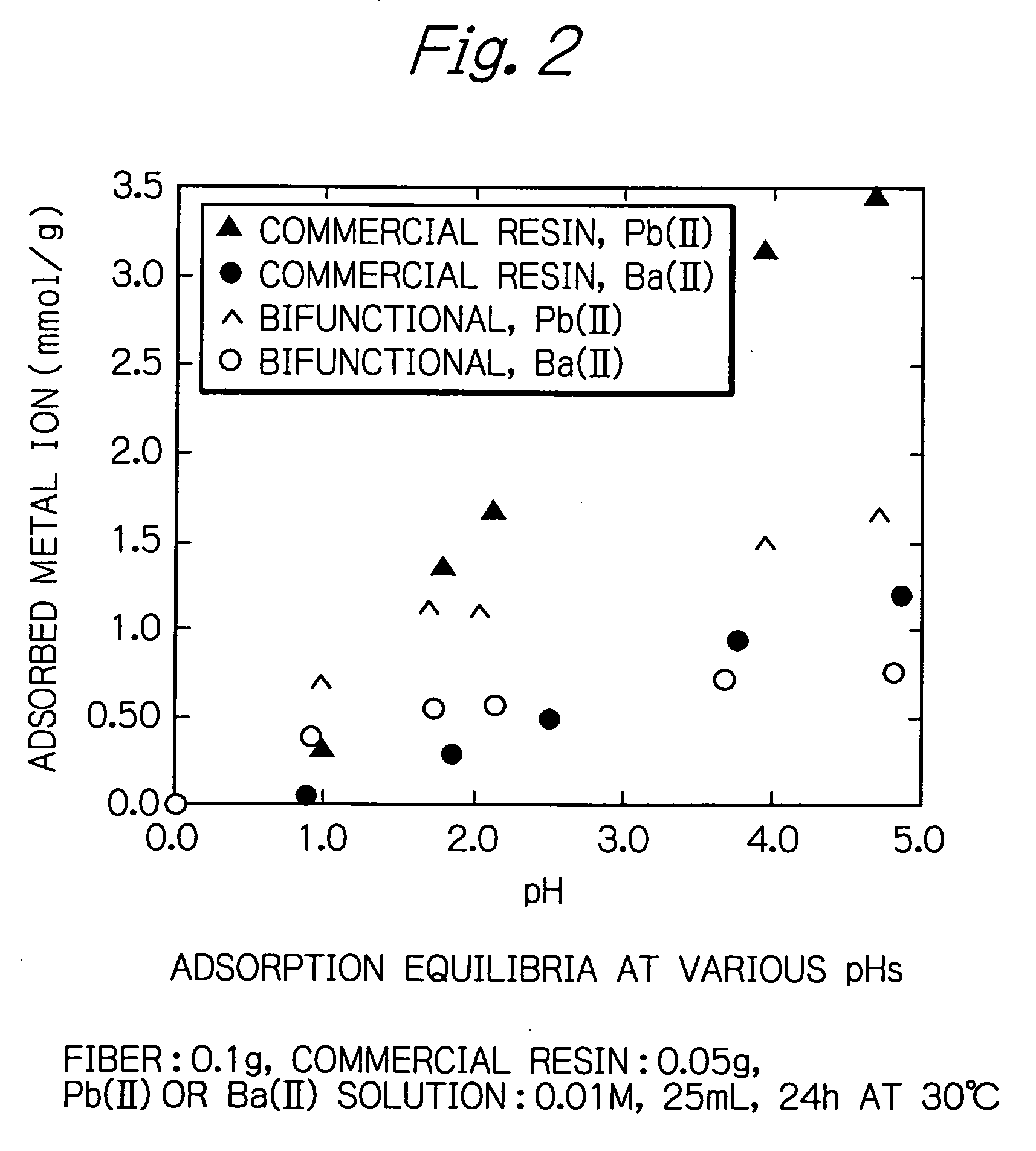Chelate adsorbents that can be used in a strongly acidic region
a technology of chelating adsorbents and acidic regions, which is applied in the field of chelating adsorbents, can solve the problems of inability to adsorb metal ions, drop in adsorption capacity and rate during acidic region use, etc., and achieves the effects of improving adsorption efficiency, facilitating adsorption, and improving adsorption ra
- Summary
- Abstract
- Description
- Claims
- Application Information
AI Technical Summary
Benefits of technology
Problems solved by technology
Method used
Image
Examples
example 1
Synthesis of Adsorbent Using Nonwoven Fabric as Polymer Substrate into which Phosphonic Acid and Other Groups were Introduced by Irradiation
[0022] A nonwoven fabric as a polymer substrate was irradiated to generate reactive points for the reaction. To this end, an electron beam was applied in a nitrogen atmosphere to give a total dose of 200 kGy. Subsequently, two monomers having a vinyl group, i.e., chloromethylstyrene and styrene, were reacted at a weight ratio of 4:1 in DMSO (dimethyl sulfoxide) at 40° C. for 3-24 hours to give monomer concentrations of 10-50%, thereby introducing graft chains into the fiber yarns.
[0023] Conversions obtained by 2- and 3-hour reactions at 40° C. were 100% and 130%, respectively. After introducing triethyl phosphite / phosphonic acid complex groups, chlorosulfonic acid was used to sulfonate the substrate, thereby producing a grafted, bifunctional chelate adsorbent fiber having phosphonic and sulfonic acid groups introduced therein. When Pb(II) ions...
example 2
Pb(II) Ion Adsorption Test with Chelate Adsorbent Fiber
[0024] The bifunctional chelate adsorbent fiber having phosphonic and sulfonic acid groups introduced therein was conditioned by alternating hydrochloric acid and sodium hydroxide and subjected to an adsorption test. A Pb(II) ion solution as the feed was adjusted to 0.001 M before the adsorbent fiber was immersed in it, which was then agitated at 20° C. for 24 hours at various pH values between 0 and 3.0.
[0025] As FIG. 1 shows, the bifunctional fiber of the present invention exhibited adsorptive recoveries of at least 90% in the region below pH 1. In other words, the bifunctional fiber of the present invention enables efficient adsorption in a strongly acidic region below pH 1.
[0026] In addition, as FIG. 2 shows, compared to the commercial resin having three times as much capacity for functional groups, the fiber of the present invention exhibited twice as much adsorption capacity in the strongly acidic region of pH 1. In oth...
example 3
Test for the Flow Rate Dependency of Chelate Adsorbent Fiber in Pb(II) and Fe(II) Ion Adsorption
[0027] The bifunctional chelate adsorbent fiber into which phosphonic and sulfonic acid groups had been introduced was packed into a column having an inside diameter of 7 mm and then conditioned by alternating hydrochloric acid and sodium hydroxide before it was subjected to an adsorption test. Two feeds, one being a Pb(II) ion solution and the other being a Fe(III) ion solution, were each adjusted to 0.01 M, provided that the Fe(III) ion solution was also adjusted to pH 1.8; the feeds were then passed through the column at space velocities (S.V.) in the range of 40 to 1000 h−1. As FIG. 3 shows, the bifunctional chelate adsorbent fiber of the present invention enabled rapid adsorption of Pb(II) ions even at the space velocity of 1000 h−1. This is clear from the matching between the shapes of breakthrough curves at the space velocity of 900 h−1.
[0028] As FIG. 4 shows, only the bifunction...
PUM
| Property | Measurement | Unit |
|---|---|---|
| Acidity | aaaaa | aaaaa |
| Swelling volume | aaaaa | aaaaa |
| Adsorption entropy | aaaaa | aaaaa |
Abstract
Description
Claims
Application Information
 Login to View More
Login to View More - R&D
- Intellectual Property
- Life Sciences
- Materials
- Tech Scout
- Unparalleled Data Quality
- Higher Quality Content
- 60% Fewer Hallucinations
Browse by: Latest US Patents, China's latest patents, Technical Efficacy Thesaurus, Application Domain, Technology Topic, Popular Technical Reports.
© 2025 PatSnap. All rights reserved.Legal|Privacy policy|Modern Slavery Act Transparency Statement|Sitemap|About US| Contact US: help@patsnap.com



